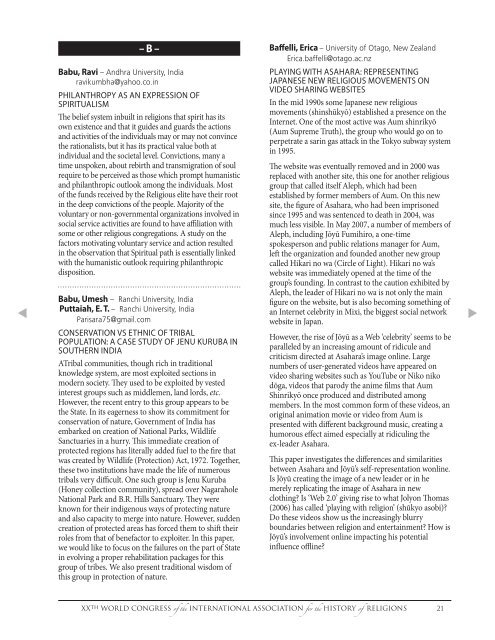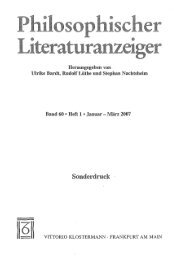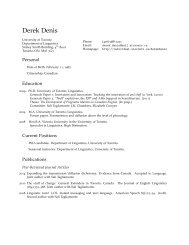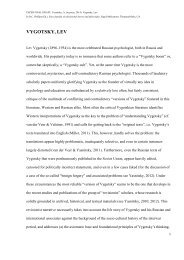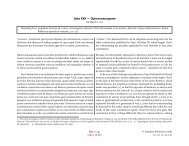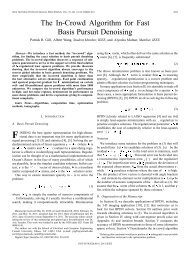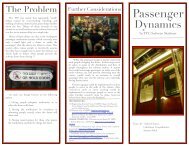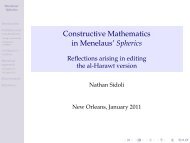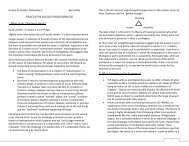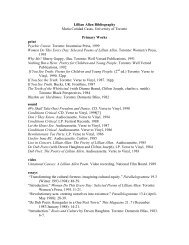BOOK of ABSTRACTS XXTh WORld COngReSS InTeRnATIOnAl ...
BOOK of ABSTRACTS XXTh WORld COngReSS InTeRnATIOnAl ...
BOOK of ABSTRACTS XXTh WORld COngReSS InTeRnATIOnAl ...
You also want an ePaper? Increase the reach of your titles
YUMPU automatically turns print PDFs into web optimized ePapers that Google loves.
– B –<br />
Babu, Ravi – Andhra University, India<br />
ravikumbha@yahoo.co.in<br />
PHilantHroPy as an exPression <strong>of</strong><br />
sPiritualism<br />
The belief system inbuilt in religions that spirit has its<br />
own existence and that it guides and guards the actions<br />
and activities <strong>of</strong> the individuals may or may not convince<br />
the rationalists, but it has its practical value both at<br />
individual and the societal level. Convictions, many a<br />
time unspoken, about rebirth and transmigration <strong>of</strong> soul<br />
require to be perceived as those which prompt humanistic<br />
and philanthropic outlook among the individuals. Most<br />
<strong>of</strong> the funds received by the Religious elite have their root<br />
in the deep convictions <strong>of</strong> the people. Majority <strong>of</strong> the<br />
voluntary or non-governmental organizations involved in<br />
social service activities are found to have affiliation with<br />
some or other religious congregations. A study on the<br />
factors motivating voluntary service and action resulted<br />
in the observation that Spiritual path is essentially linked<br />
with the humanistic outlook requiring philanthropic<br />
disposition.<br />
Babu, Umesh – Ranchi University, India<br />
Puttaiah, E. T. – Ranchi University, India<br />
Parisara75@gmail.com<br />
conservation vs etHnic <strong>of</strong> triBal<br />
PoPulation: a case study <strong>of</strong> Jenu kuruBa in<br />
soutHern india<br />
ATribal communities, though rich in traditional<br />
knowledge system, are most exploited sections in<br />
modern society. They used to be exploited by vested<br />
interest groups such as middlemen, land lords, etc.<br />
However, the recent entry to this group appears to be<br />
the State. In its eagerness to show its commitment for<br />
conservation <strong>of</strong> nature, Government <strong>of</strong> India has<br />
embarked on creation <strong>of</strong> National Parks, Wildlife<br />
Sanctuaries in a hurry. This immediate creation <strong>of</strong><br />
protected regions has literally added fuel to the fire that<br />
was created by Wildlife (Protection) Act, 1972. Together,<br />
these two institutions have made the life <strong>of</strong> numerous<br />
tribals very difficult. One such group is Jenu Kuruba<br />
(Honey collection community), spread over Nagarahole<br />
National Park and B.R. Hills Sanctuary. They were<br />
known for their indigenous ways <strong>of</strong> protecting nature<br />
and also capacity to merge into nature. However, sudden<br />
creation <strong>of</strong> protected areas has forced them to shift their<br />
roles from that <strong>of</strong> benefactor to exploiter. In this paper,<br />
we would like to focus on the failures on the part <strong>of</strong> State<br />
in evolving a proper rehabilitation packages for this<br />
group <strong>of</strong> tribes. We also present traditional wisdom <strong>of</strong><br />
this group in protection <strong>of</strong> nature.<br />
Baffelli, Erica – University <strong>of</strong> Otago, New Zealand<br />
Erica.baffelli@otago.ac.nz<br />
Playing WitH asaHara: rePresenting<br />
JaPanese neW religious movements on<br />
video sHaring WeBsites<br />
In the mid 1990s some Japanese new religious<br />
movements (shinshūkyō) established a presence on the<br />
Internet. One <strong>of</strong> the most active was Aum shinrikyō<br />
(Aum Supreme Truth), the group who would go on to<br />
perpetrate a sarin gas attack in the Tokyo subway system<br />
in 1995.<br />
The website was eventually removed and in 2000 was<br />
replaced with another site, this one for another religious<br />
group that called itself Aleph, which had been<br />
established by former members <strong>of</strong> Aum. On this new<br />
site, the figure <strong>of</strong> Asahara, who had been imprisoned<br />
since 1995 and was sentenced to death in 2004, was<br />
much less visible. In May 2007, a number <strong>of</strong> members <strong>of</strong><br />
Aleph, including Jōyū Fumihiro, a one-time<br />
spokesperson and public relations manager for Aum,<br />
left the organization and founded another new group<br />
called Hikari no wa (Circle <strong>of</strong> Light). Hikari no wa’s<br />
website was immediately opened at the time <strong>of</strong> the<br />
group’s founding. In contrast to the caution exhibited by<br />
Aleph, the leader <strong>of</strong> Hikari no wa is not only the main<br />
figure on the website, but is also becoming something <strong>of</strong><br />
an Internet celebrity in Mixi, the biggest social network<br />
website in Japan.<br />
However, the rise <strong>of</strong> Jōyū as a Web ‘celebrity’ seems to be<br />
paralleled by an increasing amount <strong>of</strong> ridicule and<br />
criticism directed at Asahara’s image online. Large<br />
numbers <strong>of</strong> user-generated videos have appeared on<br />
video sharing websites such as YouTube or Niko niko<br />
dōga, videos that parody the anime films that Aum<br />
Shinrikyō once produced and distributed among<br />
members. In the most common form <strong>of</strong> these videos, an<br />
original animation movie or video from Aum is<br />
presented with different background music, creating a<br />
humorous effect aimed especially at ridiculing the<br />
ex-leader Asahara.<br />
This paper investigates the differences and similarities<br />
between Asahara and Jōyū’s self-representation wonline.<br />
Is Jōyū creating the image <strong>of</strong> a new leader or in he<br />
merely replicating the image <strong>of</strong> Asahara in new<br />
clothing? Is ‘Web 2.0’ giving rise to what Jolyon Thomas<br />
(2006) has called ‘playing with religion’ (shūkyo asobi)?<br />
Do these videos show us the increasingly blurry<br />
boundaries between religion and entertainment? How is<br />
Jōyū’s involvement online impacting his potential<br />
influence <strong>of</strong>fline?<br />
XX tH WORLd CONGREss <strong>of</strong> the INtERNAtIONAL AssOCIAtION for the HIstORy <strong>of</strong> RELIGIONs<br />
21


